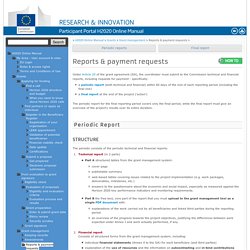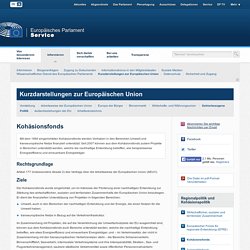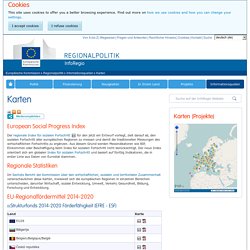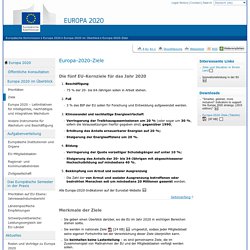

Reports & payment requests - H2020 Online Manual. Under Article 20 of the grant agreement (GA), the coordinator must submit to the Commission technical and financial reports, including requests for payment - specifically: The periodic report for the final reporting period covers only the final period, while the final report must give an overview of the project's results over its entire duration.

Continuous reporting As a beneficiary, you can and should use the continuous reporting functionality as soon as the project starts to submit information that will go into the periodic reports. This includes: deliverables progress in achieving milestones updates to the publishable summary response to critical risks, publications, communications activities, IPRs your answers to the questionnaire about the economic and social impact of the project. The technical report (both parts) is first 'locked for review' by the coordinator before being officially submitted. Preparing your periodic report Approving partners' reports Missing statements.
Social Business. Social business is a cause-driven business.

In a social business, the investors/owners can gradually recoup the money invested, but cannot take any dividend beyond that point. Purpose of the investment is purely to achieve one or more social objectives through the operation of the company, no personal gain is desired by the investors. The company must cover all costs and make profit, at the same time achieve the social objective, such as, healthcare for the poor, housing for the poor, financial services for the poor, nutrition for malnourished children, providing safe drinking water, introducing renewable energy, etc. in a business way.
The impact of the business on people or environment, rather the amount of profit made in a given period measures the success of social business. Sustainability of the company indicates that it is running as a business.
Projektplanug. 281 IFOAM book full DE draft4. Antragsstellung. Projektmanagement. Eu Außenhilfe. Fundraising-Knigge – Unfrisierte Gedanken über den Umgang mit Spendern. Ko-Finanzierung. EU AKTIONSPROGRAMME. Europäisches Parlament. Mit dem 1994 eingerichteten Kohäsionsfonds werden Vorhaben in den Bereichen Umwelt und transeuropäische Netze finanziell unterstützt.

Seit 2007 können aus dem Kohäsionsfonds zudem Projekte in Bereichen unterstützt werden, welche die nachhaltige Entwicklung betreffen, wie beispielsweise Energieeffizienz und erneuerbare Energieträger. Rechtsgrundlage Artikel 177 (insbesondere Absatz 2) des Vertrags über die Arbeitsweise der Europäischen Union (AEUV). Ziele Der Kohäsionsfonds wurde eingerichtet, um im Interesse der Förderung einer nachhaltigen Entwicklung zur Stärkung des wirtschaftlichen, sozialen und territorialen Zusammenhalts der Europäischen Union beizutragen. Umwelt, auch in den Bereichen der nachhaltigen Entwicklung und der Energie, die einen Nutzen für die Umwelt haben;transeuropäische Netze in Bezug auf die Verkehrsinfrastruktur.
Seit 2014 werden aus dem Kohäsionsfonds – mit 10 Mrd. Förderfähige Länder Haushalt und Finanzregelungen Rolle des Europäischen Parlaments Filipa Azevedo.
Kohäsionspolitik, ESIF. Karten - EU-Regionalpolitik - Europäische Kommission. European Social Progress Index Der regionale Index für sozialen Fortschritt für den jetzt ein Entwurf vorliegt, zielt darauf ab, den sozialen Fortschritt aller europäischen Regionen zu messen und damit die traditionellen Messungen des wirtschaftlichen Fortschritts zu ergänzen.

Aus diesem Grund werden Messindikatoren wie BIP, Einkommen oder Beschäftigung beim Index für sozialen Fortschritt nicht berücksichtigt. Der neue Index orientiert sich am globalen Index für sozialen Fortschritt und basiert auf fünfzig Indikatoren, die in erster Linie aus Daten von Eurostat stammen. Regionale Statistiken Im Sechste Bericht der Kommission über den wirtschaftlichen, sozialen und territorialen Zusammenhalt veranschaulichen diese Karten, inwieweit sich die europäischen Regionen in einzelnen Bereichen unterscheiden, darunter Wirtschaft, soziale Entwicklung, Umwelt, Verkehr, Gesundheit, Bildung, Forschung und Entwicklung.
Statistics Illustrated - Eurostat. Europa 2020 – EU-Kernziele für das Wirtschaftswachstum - Europäische Kommission. Die fünf EU-Kernziele für das Jahr 2020 1.

Beschäftigung 75 % der 20- bis 64-Jährigen sollen in Arbeit stehen. 2. FuE 3 % des BIP der EU sollen für Forschung und Entwicklung aufgewendet werden. 3. Klimawandel und nachhaltige Energiewirtschaft Verringerung der Treibhausgasemissionen um 20 % (oder sogar um 30 %, sofern die Voraussetzungen hierfür gegeben sind) gegenüber 1990; Erhöhung des Anteils erneuerbarer Energien auf 20 %; Steigerung der Energieeffizienz um 20 %. 4. Bildung Verringerung der Quote vorzeitiger Schulabgänger auf unter 10 %; Steigerung des Anteils der 30- bis 34-Jährigen mit abgeschlossener Hochschulbildung auf mindestens 40 %. 5.
Niedersachsen INTERREG V. Nationale Agenturen. Niedersachsen ESIF. Bundesministerien. Executive Agencies. EU Aktionsprogramme. ESF. European Development Fund (EDF) Created in 1957 by the Treaty of Rome and launched in 1959, the European Development Fund (EDF) is the EU's main instrument for providing development aid to African, Caribbean and Pacific (ACP) countries and to overseas countries and territories (OCTs).

The EDF funds cooperation activities in the fields of economic development, social and human development as well as regional cooperation and integration. It is financed by direct contributions from EU Member States according to a contribution key and is covered by its own financial rules. Although the 11th EDF remains outside of the EU budget, the negotiations in the Council of Ministers on the different elements of the 11th EDF have taken place in parallel with the negotiations of the external Instruments financed under the budget, to ensure consistency.
The total financial resources of the 11th EDF amount to €30.5 billion for the period 2014-2020. There are only minor modifications in the 11th EDF compared to the 10th EDF. Abteilungen (Generaldirektionen) und Dienststellen - Europäische Kommission. Apply for grants.